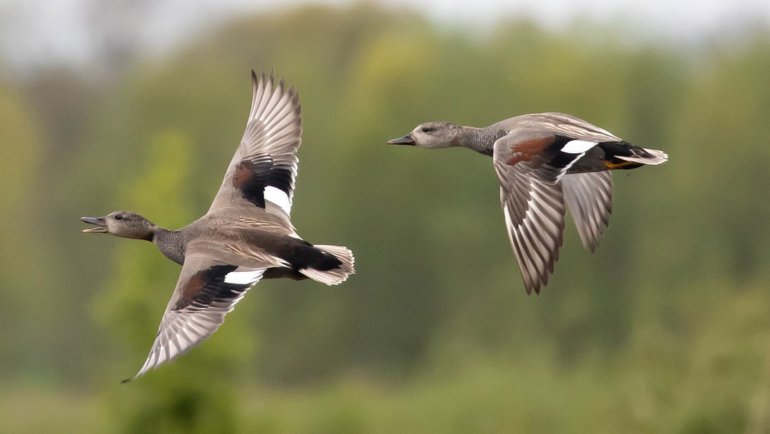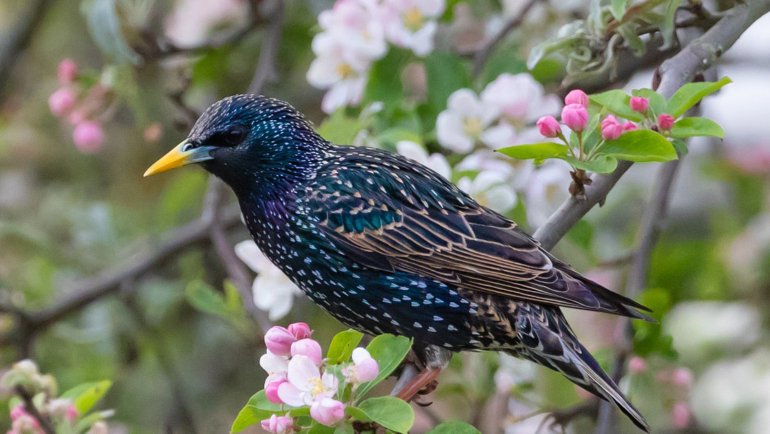Welcome to an exploration into the world of bee-eaters, the colorful and acrobatic birds that decorate the skies across various continents. Known for their eye-catching plumage and swift, agile flight, these fascinating birds are a subject of interest for ornithologists and birdwatchers alike.
In this article, we’ll delve into the classifications, unique characteristics, behaviors, and conservation status of these intriguing creatures. So, let’s take a closer look at these flying jewels of the animal kingdom.
The Bee-Eater at a Glance
Classification
| Kingdom: | Animalia |
| Phylum: | Chordata |
| Class: | Aves (Birds) |
| Order: | Coraciiformes |
| Family: | Meropidae |
| Genus: | Merops, Nyctyornis, Meropogon |
| Species: | Various (e.g., Merops apiaster, Merops orientalis) |
Essential Information
| Average Size: | 7.5 to 13 inches (19 to 33 cm) |
| Average Weight: | 0.5 to 2 ounces (15 to 57 grams) |
| Average Lifespan: | 5-10 years |
| Geographical Range: | Africa, Europe, Asia, and Australasia |
| Conservation Status: | Mostly Least Concern, some Near Threatened (IUCN Red List) |
Species and Subspecies
Bee-eaters comprise around 27 different species under the 3 genera. While they share many traits, there are distinctive characteristics that set them apart.
- European Bee-Eater (Merops apiaster): Found mainly in Europe and parts of Africa, these birds are identified by their multi-colored plumage, featuring blues, greens, and yellows.
- Blue-cheeked Bee-Eater (Merops persicus): Native to parts of Africa and the Middle East, these bee-eaters have striking blue cheeks and green bodies.
- Rainbow Bee-Eater (Merops ornatus): Found in Australia, these birds are smaller than their relatives and have a distinct ‘rainbow’ of colors on their feathers.
- Red-throated Bee-Eater (Merops bulocki): These bee-eaters are native to West and Central Africa and have a distinct red throat patch.
- Little Bee-Eater (Merops pusillus): As the name suggests, these are one of the smallest species, and they have bright green plumage with a yellow throat.
The differences between these species can range from the size and color of their plumage to their preferred habitats and migratory patterns. Some species are more terrestrial, preferring to perch on low-lying shrubs, while others are more arboreal.
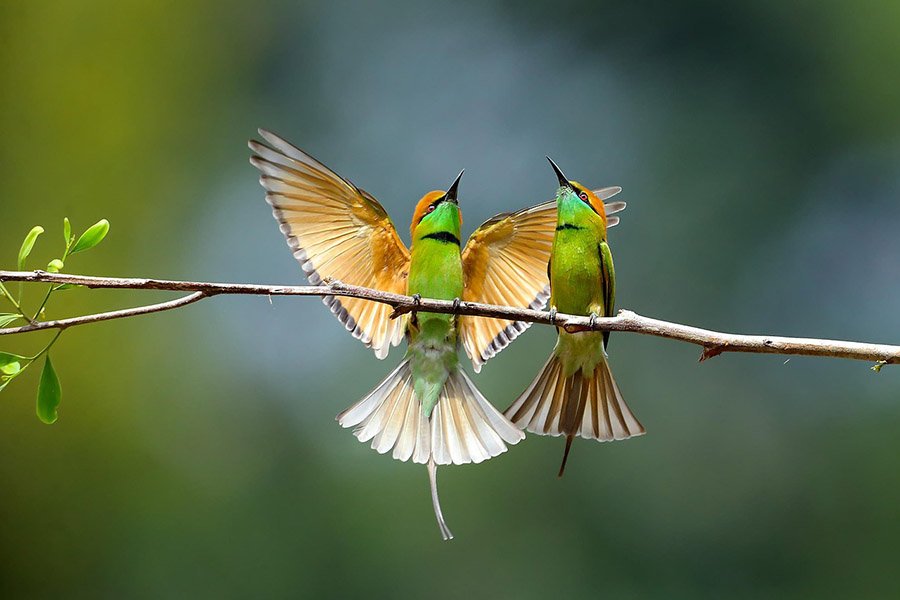
Description
Bee-eaters are among the most vibrant and visually striking birds, thanks to their colorful plumage that often blends shades of green, blue, yellow, and sometimes even red or orange.
They typically have slender bodies and long, pointed beaks that are well-suited for their insectivorous diet. Bee-eaters also have elongated central tail feathers, giving them a forked tail appearance that aids in their aerial acrobatics.
Sexual dimorphism is generally minimal, meaning males and females usually look quite similar, although males may have slightly brighter colors. They range in size from about 7.5 to 13 inches (19 to 33 cm) and weigh between 0.5 to 2 ounces (15 to 57 grams).
Habitat and Distribution
Bee-eaters can be found in a diverse array of habitats ranging from savannas and open woodlands to coastal cliffs and deserts. They prefer areas with an abundance of flowering plants that attract a wide variety of insects, especially bees.
Geographically, their range is equally diverse, spanning from parts of Europe and Asia to almost the entirety of Africa and extending to Australasia.
Some species are migratory, moving seasonally to take advantage of abundant food sources, while others are more sedentary.
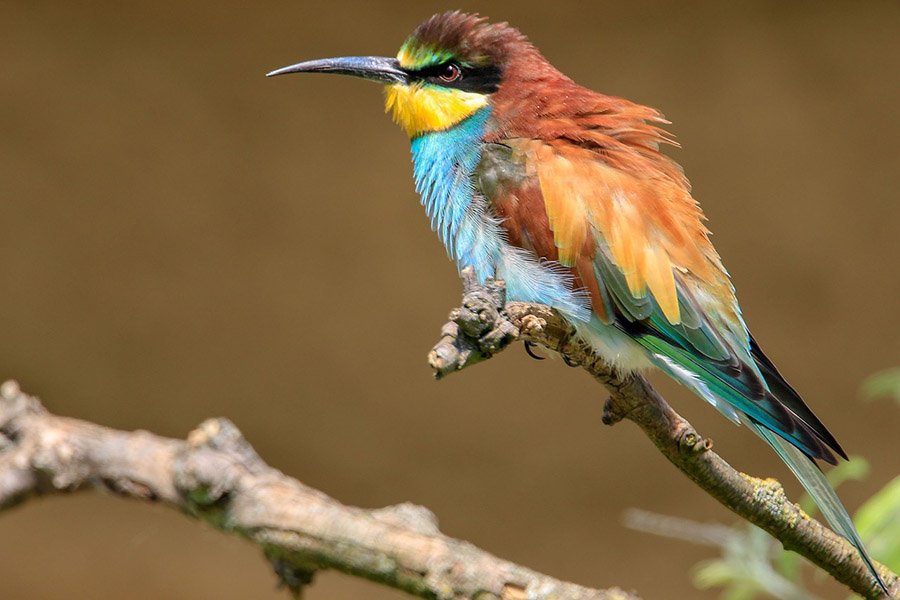
Behavior
Bee-eaters are diurnal, active mainly during daylight hours when their insect prey is most available. These birds are highly social and are often seen in groups, whether they are perched together in trees or flying in coordinated patterns. They are particularly known for their agile and acrobatic flight, swooping and diving to catch insects mid-air.
Communication is often vocal and consists of a variety of melodious calls and chattering sounds. Some species also use physical cues like feather displays during courtship or to establish territory.
These birds are adept hunters, and their social structure often allows for coordinated hunting techniques. For instance, they might take turns flying through insect swarms to catch prey or alert each other to opportunities and dangers.
Notably, some species of bee-eaters engage in cooperative breeding, where relatives help to rear the young of a central mating pair. This complex social behavior adds another layer to the intricate lives of these colorful birds.
Diet and Feeding Behavior
As their name suggests, bee-eaters predominantly feed on bees, but their diet is not limited to just these insects. They also consume wasps, hornets, and various other flying insects.
Using their keen eyesight and agile flying skills, they catch their prey mid-air in a display of impressive acrobatics. Once captured, they use their specialized beaks to remove stingers before consuming their catch.
They are experts at catching and neutralizing their stinging prey, making them one of the few birds capable of safely eating bees and wasps.
Predators
The natural predators of bee-eaters are primarily birds of prey, such as hawks and eagles, which can catch them during flight. Snakes and larger mammals may also prey on eggs and nestlings. The birds’ bright coloration, while beautiful, can make them more visible to predators.
However, their agility in flight and social behavior often serve as effective defenses. Many bee-eater species use sentinel birds that keep watch and alert the group to approaching danger, thereby reducing the risk of predation.
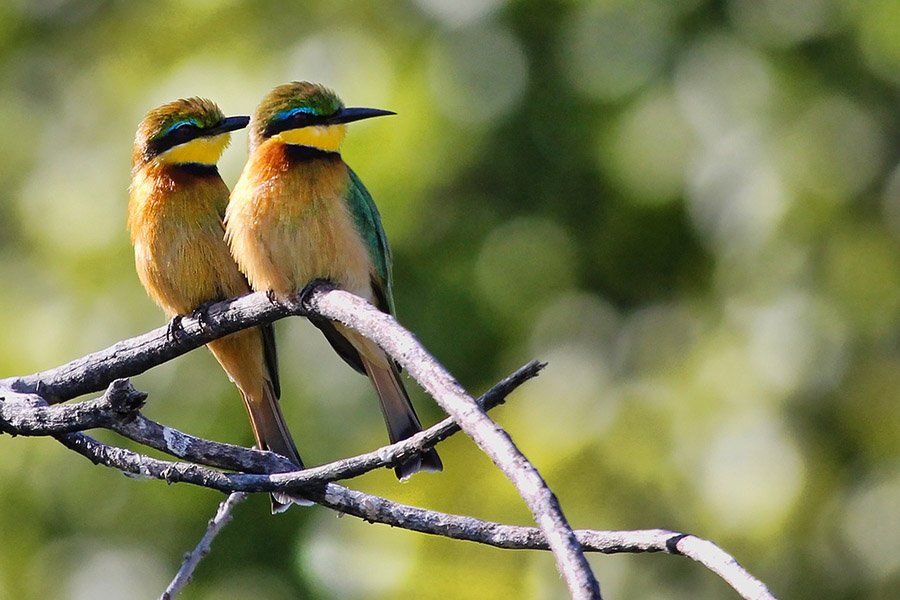
Reproduction and Life Cycle
Bee-eaters are known for their interesting mating rituals, which often involve elaborate aerial displays and vocalizations. After mating, the female usually lays between 2 to 9 eggs, depending on the species. Both parents, and sometimes even other group members in the case of cooperative breeders, take turns incubating the eggs.
The eggs hatch after about 20 days, and the parents feed the chicks by regurgitating partially digested insects. The chicks fledge (leave the nest) about 30 days after hatching but often stay with the family group, participating in group activities like hunting and sentinel duties.
Conservation and Threats
Most species of bee-eaters are classified as “Least Concern” according to the IUCN Red List of Threatened Species. However, habitat loss due to agriculture and development is a growing concern for some species.
Some are considered “Near Threatened,” especially those with restricted ranges or specific habitat requirements. Conservation efforts for bee-eaters primarily focus on habitat preservation and environmental education to reduce human-wildlife conflict.
Fun Facts
- Bee Handling: Bee-eaters are skilled at removing the stingers from bees and wasps. They accomplish this by repeatedly hitting the insect on a hard surface until the stinger is dislodged.
- Family Ties: Some species of bee-eaters practice cooperative breeding, where younger relatives help rear the offspring of a central mating pair.
- Migration Marvels: European Bee-Eaters can migrate thousands of miles between Europe and Africa, crossing the Sahara Desert in the process.
- Rainbow Colors: The Rainbow Bee-Eater is one of the few birds to display almost all the colors of the rainbow in its plumage.
- Versatile Nests: Depending on the species and available resources, bee-eaters may nest in sandy banks, cliff faces, or even on flat ground.
Frequently Asked Questions
Do bee-eaters only eat bees?
No, bee-eaters have a varied diet that includes other flying insects like wasps, hornets, and even butterflies.
Are bee-eaters harmful to bees and local ecosystems?
Generally, bee-eaters do not significantly impact bee populations or the ecosystems they inhabit. Their feeding is usually not disruptive enough to cause harm.
How do bee-eaters communicate?
Bee-eaters communicate using a variety of vocalizations, including whistles and chattering sounds. Some species also use physical displays.
Do bee-eaters migrate?
Some species of bee-eaters are migratory and travel long distances between breeding and wintering grounds. For example, the European Bee-Eater migrates between Europe and Africa.
How can I differentiate between male and female bee-eaters?
In most species, males and females look quite similar, but males often have slightly brighter plumage. The differences are generally subtle and may require keen observation to spot.

